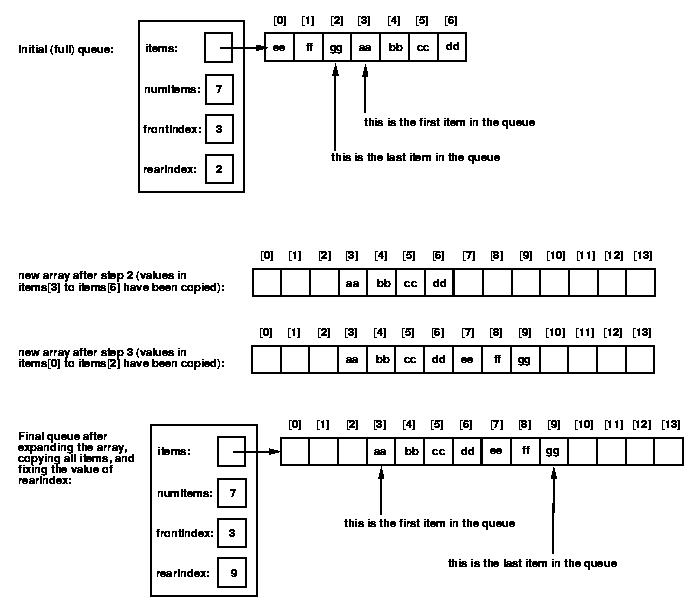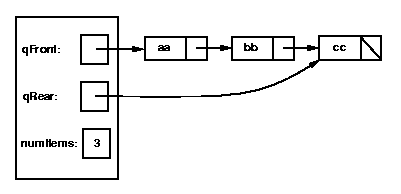Array Implementation
Below is the definition of the Stack class, using an array to store
the items in the stack;
note that we include a static final variable INITSIZE, to be used by
the Stack constructor as the initial size of the array (the same thing
was done for the Sequence class).
public class Stack {
//*** methods ***
// constructor
public Stack() { ... }
// add items
public void push(Object ob) { ... }
// remove items
public Object pop() { ... } throws EmptyStackException { ... }
// other methods
public Object peek() { ... } throws EmptyStackException { ... }
public int size() { ... }
public boolean isEmpty() { ... }
// *** fields ***
private static final int INITSIZE = 10; // initial array size
private Object[] items; // the items in the stack
private int numItems; // the number of items in the stack
}
TEST YOURSELF #1
Write the Stack constructor.
solution
The push method is easier to implement than the Sequence addBefore and
addAfter methods, because items can only be pushed onto the top of
the stack.
Note that it is up to us as the designers of the Stack class to decide
which end of the array corresponds to the top of the stack.
We could choose always to add items at the beginning of the array, or
always to add items at the end of the array.
However, it is clearly not a good idea to add items at the beginning of the
array since that requires moving all existing items;
i.e., that choice would make push be O(N) (where N is the number of items
in the stack).
If we add items at the end of the array, then push is O(1), except when the
array is full.
Here are before and after pictures, illustrating the effects of a call
to push:

And here's the code for the push method:
public void push(Object ob) {
if (items.length == numItems) expandArray();
items[numItems] = ob;
numItems++;
}
The pop method needs to remove the top-of-stack item, and return it, as
illustrated below.

Note that, in the picture, the value "bbb" is still in items[2];
however, that value is no longer in the stack because numItems is
2 (which means that items[1] is the last item in the stack).
TEST YOURSELF #2
Complete the pop method, using the following header
public Object pop() throws EmptyStackException {
}
solution
The peek method is very similar to the pop method, except that it only
returns the top-of-stack value without changing the stack.
The size method simply returns the value of numItems, and the isEmpty method
returns true iff numItems is zero.
TEST YOURSELF #3
Fill in the following table, using Big-O notation to give the worst
and average-case times for each of the stack methods for a stack of
size N.










